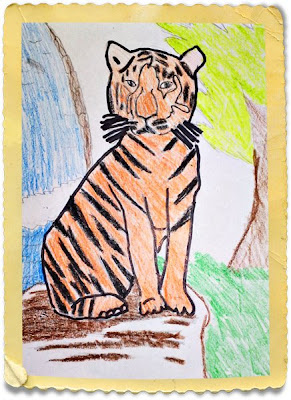
A main feature of the Black Rhinoceros is its prehensile lip; its lips look like a hook and work like fingers, grasping and pulling leaves and shrubs into its mouth. This huge animal can run fast at 40 miles per hour, almost as fast as a car on the highway! They look for food in the early morning and late afternoon; the rest of the day, they rest in the shade or go "swimming" in the water pools, coating their skin with mud for their "sunscreen" and to make biting flies avoid them.
There are two horns on the Black Rhinoceros; the front horn is the much larger one. Rhino horns grow as much as three inches a year and can grow up to 5 feet! Female rhinos use their horns to protect their babies, while male rhinos use their horns to fight off attackers.
In 1970, there were 70,000 Black Rhinos in the world. Today, there are only 3,600. This drastic fall in the Black Rhinoceros population is the main reason why this huge animal is a CRITICALLY ENDANGERED SPECIES. Some reasons why they are endangered:
1. Hunting - Poachers hunt the Black Rhinoceros for its horn. People in Asia use the horns for medicinal use, while people in North Africa and the Middle East want the horn material to make knife handles.
2. Habitat destruction -The Black Rhino lives in open grasslands and plains. As the people move into these places and develop them for homes and buildings, the White Rhino is left with smaller and smaller places to live.
Black Rhino Fast Facts
Scientific Name: Diceros Bicornis
Type: Mammal
Diet: Herbivore
Height: 11 to 13.75 feet
Weight: 3,168 to 7,920 pounds
Range: Africa, India, Southeast Asia
Diet: Watergrass and leaves
Scientific Name: Diceros Bicornis
Type: Mammal
Diet: Herbivore
Height: 11 to 13.75 feet
Weight: 3,168 to 7,920 pounds
Range: Africa, India, Southeast Asia
Diet: Watergrass and leaves
 To make a Black Rhinoceros Paper Model, click on the image or here.
To make a Black Rhinoceros Paper Model, click on the image or here.











